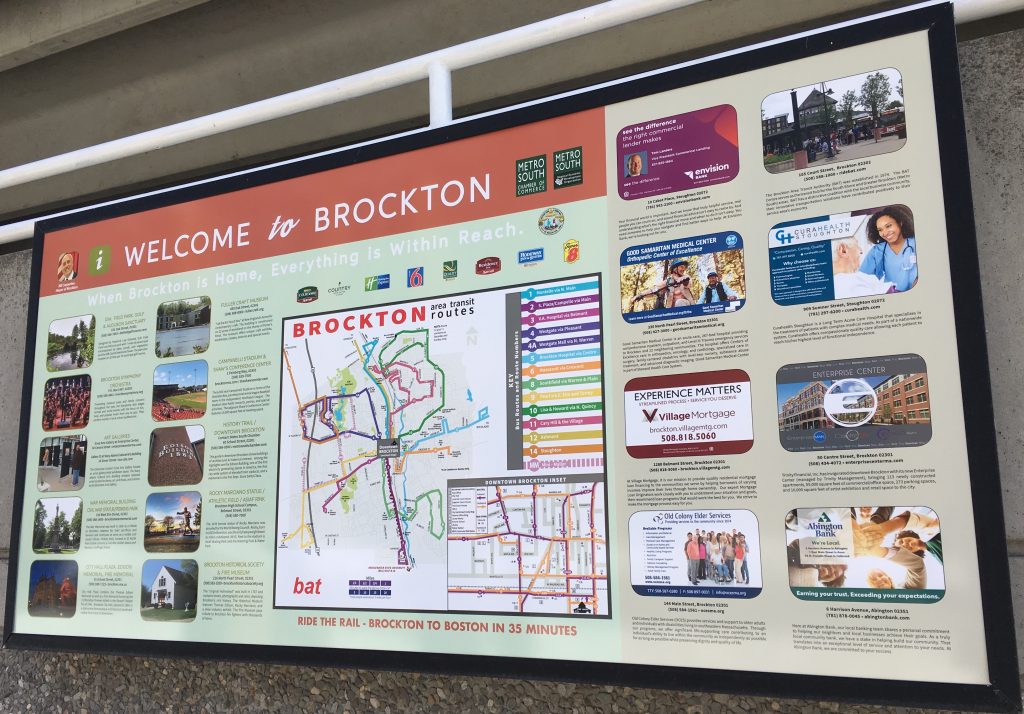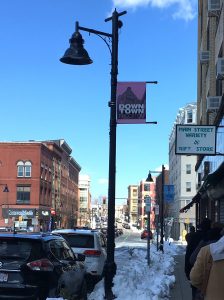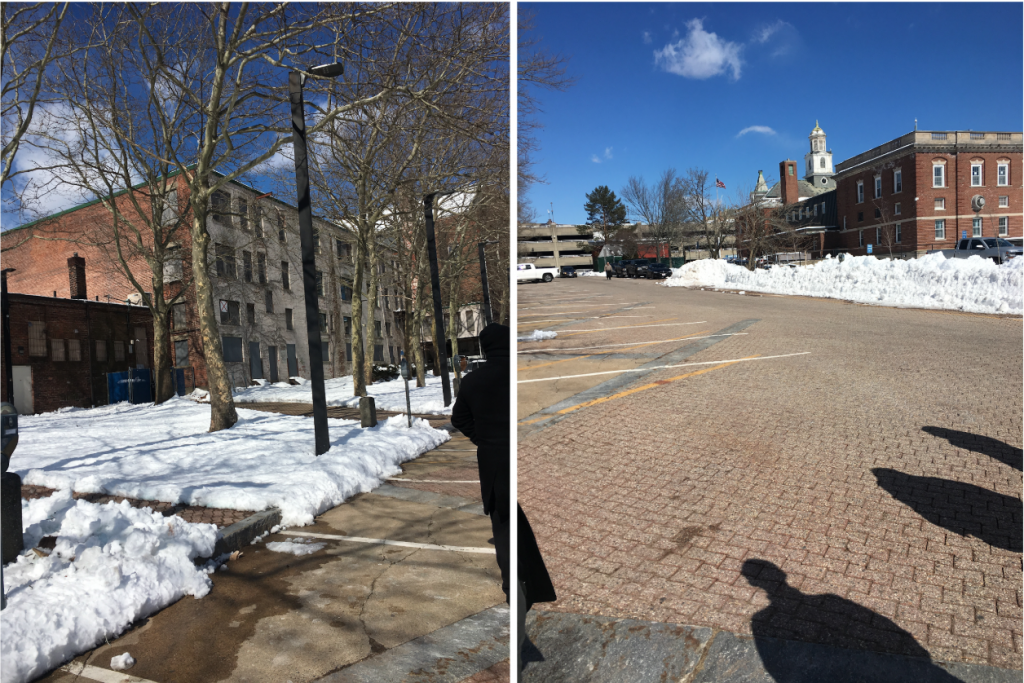
News
By Smart Growth America, May 17, 2019
How does a city make sure it’s ready for investment? A question weighing on many municipal minds is how to organize planning, economic development strategies, and zoning regulations to make it clear to residents, developers, and investors that this is the right place to be. Further, how does a community encourage investment without sacrificing the characteristics that make it an attractive community to its residents?
Brockton, Massachusetts, a Gateway City of more than 95,000 residents 30 minutes south of Boston, has been asking itself these questions for decades. With the arrival of Opportunity Zones as a new place-based investment tool, cities and towns like Brockton are working not just to attract investment but also to ensure that new investment benefits the entire community.

Brockton’s history
In the space of 21.6 square miles, Brockton features a dynamic downtown, three MBTA Commuter Rail stations, several industrial zones, a number of distinct residential neighborhoods, open space, and a natural area around the Salisbury River. As a former regional shoe manufacturing center with a history of post-industrial disinvestment, Brockton faced numerous challenges heading into the 21st century, with high vacancy rates and deteriorating downtown buildings. Recently, however, it has undertaken significant planning efforts to overcome those challenges. A public incentive strategy dubbed the “seven layer dip” has encouraged private investment downtown and in other neighborhoods. The layers are comprised of:
- Chapter 40R Smart Growth Zoning
- Housing Development Incentive Program (HDIP)
- Urban Renewal
- Downtown Brockton DIF Invested Revenue District
- New Market Tax Credit
- Historic Tax Credit
- Opportunity Zones
This strategy has become an example for planners and municipal leaders across the Commonwealth and has catalyzed a period of significant growth and revitalization for the city.

Opportunity Zones
The seventh and most recent “layer” to downtown Brockton’s seven layer dip is the Opportunity Zone tax incentive. Brockton requested Opportunity Zone designation through the Massachusetts governor’s office and four zones were designated within city limits, two of which are located downtown.
One reason Brockton sought these tract designations was to add a new incentive that encourages capital flow into underserved areas. The economic development needs of Brockton’s downtown align well with the reasons the Opportunity Zone incentive was created—to encourage long-term, private investment in America’s low-income urban and rural communities. Rob May, Brockton’s director of planning and economic development, gave examples of some ideal investment areas in a recent interview with LOCUS. These areas include entertainment and restaurants that would allow Brockton “to an 18-hour city”” in which people can live, work, and play, small-scale manufacturing, life science facilities, and more. May also anticipates possible investment in small, affordable commercial “incubator space and small flex space that will allow new businesses to come to community and grow.” Investing in small business development downtown can create economic opportunity that benefits the community at large.
These Opportunity Zones also align with other incentives in the “seven layer dip” that are meant to enhance equity and affordability for the city’s low-income community. For example, one downtown zone encompasses the same area as Brockton’s Chapter 40R Smart Growth Zoning Overlay, which requires that at least 20 percent of housing units built be affordable.
The municipal role: How to plan, prepare, and welcome new projects
Local governments, including Brockton, have expressed concern with the details of Opportunity Fund mechanics. May explained that, “it’s important for cities to be as proactive as possible” to ensure that new development is equitable and sustainable, since there is no provision in the federal law that requires notifying or getting approval from local authorities when spending Opportunity Fund dollars beyond the existing zoning and site plan review. Brockton has been proactive by planning for growth in general (e.g. seven layer dip) and thus was prepared when Opportunity Zones were released.
Making the right match
May explained that Brockton is most concerned with missing out on Opportunity Fund investment entirely, and therefore has prioritized attracting investment in ways that meet the city’s needs. A key strategy employed by the city is actively engaging in matchmaking efforts with developers to initiate and accelerate key projects. The city is also preparing an investors prospectus that will detail available opportunities and market the city for investment. “We’re going out to bring new development teams that haven’t experienced Brockton to the table and to the community. We’re working with our local realtors and we’re going to be rolling out a much larger campaign to identify prospective investors and tenants and end users.”
Zoning for the uses you want to see
In addition to matchmaking, the city has made a purposeful effort to structure its zoning in a way that showcases the types of uses they want, rather than using zoning as a preventative mechanism to avoid undesired uses. The zoning code permits high commercial and residential density in core areas, including downtown and near transit, and encourages mixing uses where possible. The result is that a number of multifamily buildings are being built and redeveloped within walking distance of the commuter rail, health and government services, and retail and entertainment amenities. “We’ve created the plans, we’ve created the zoning for what wants and we’ve set up all the rules and regulations, so can’t come in and just do whatever wants,” May said. The local regulations in place will act as guardrails against unfavorable or potentially harmful development.
Engaging the community
May imagined that if a hypothetical city or town had to start planning from scratch, community visioning needs to be the first step. “One of the first things to do is have a vision and a plan that is publicly curated and is a common vision we all buy into,” like the city did for the Sycamore Grove project, below. The next step is to create the “zoning that matches and supports your vision.”

Overall, the city’s proactive planning, zoning, and economic development policies have positioned Brockton to be ready to receive new sources of capital and new growth. “We’ve done our planning and we’re open for business. We’re saying yes to what we want and getting that message out so that people know, ‘This is what we want and if you’re interested in doing that, come to Brockton.’”
Save the date for LOCUS’ June 20 LinkUp in Brockton: Join city officials, developers, and investors as we visit transit-oriented development opportunities in Brockton’s Opportunity Zones.
Related News

© 2025 Smart Growth America. All rights reserved
Site By3Lane Marketing












